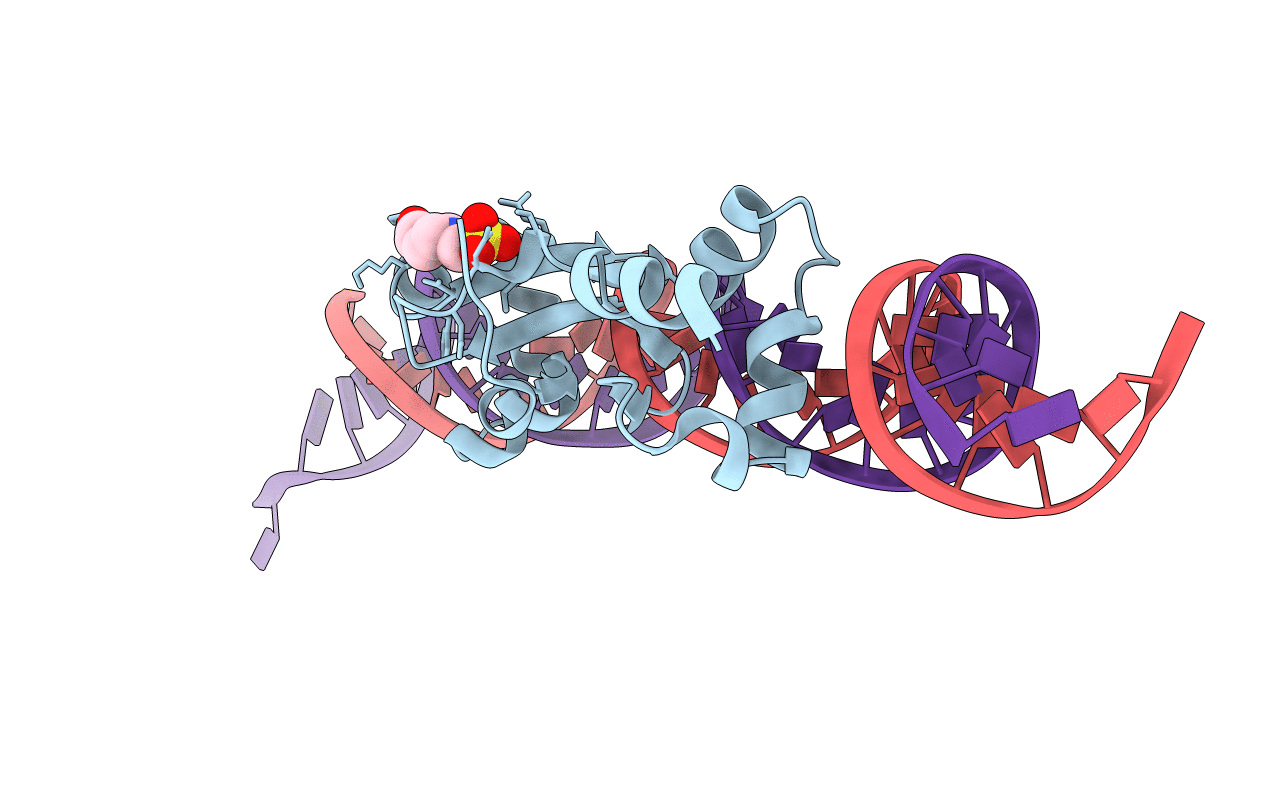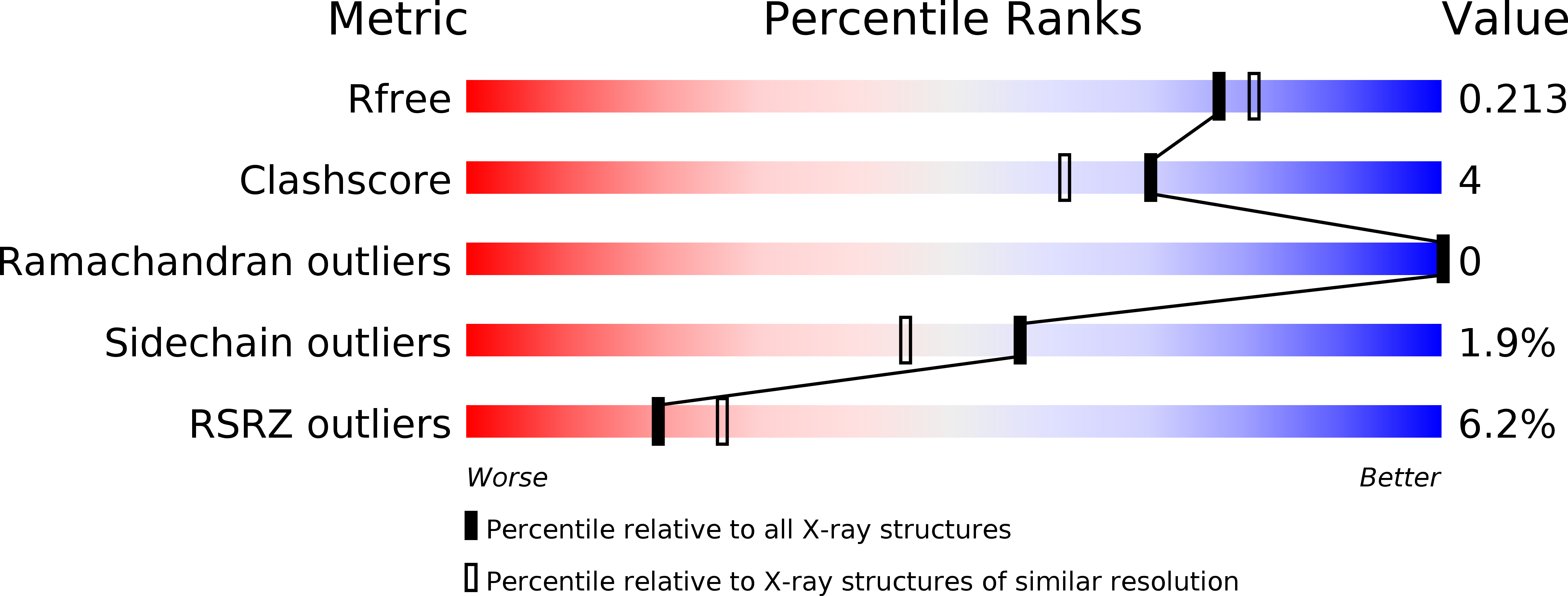
Deposition Date
2018-03-22
Release Date
2018-07-25
Last Version Date
2024-01-17
Entry Detail
PDB ID:
6G1T
Keywords:
Title:
TraN, a repressor of an Enterococcus conjugative type IV secretion system
Biological Source:
Source Organism:
Enterococcus faecalis (Taxon ID: 1351)
Plasmid pIP501 (Taxon ID: 2574)
Plasmid pIP501 (Taxon ID: 2574)
Host Organism:
Method Details:
Experimental Method:
Resolution:
1.93 Å
R-Value Free:
0.21
R-Value Work:
0.18
Space Group:
C 1 2 1


